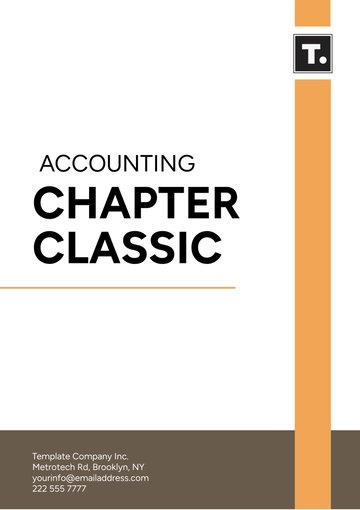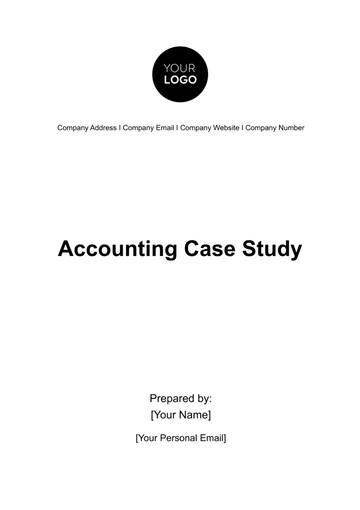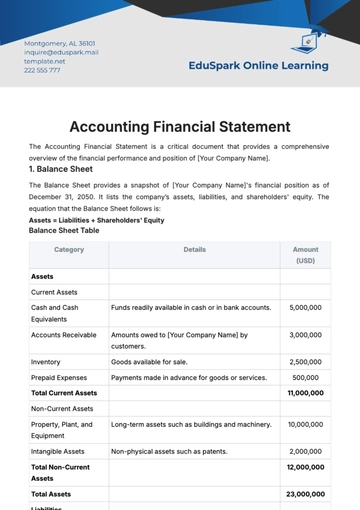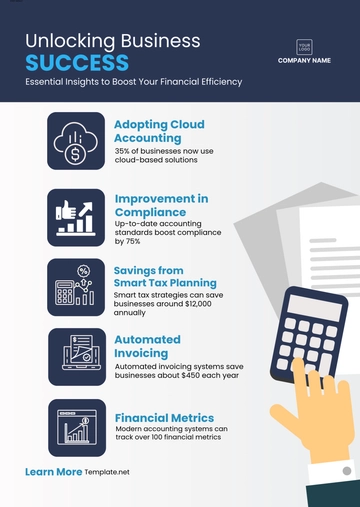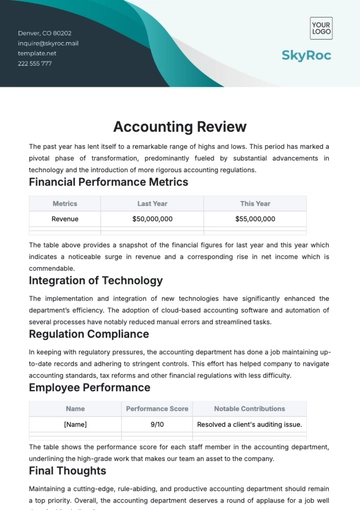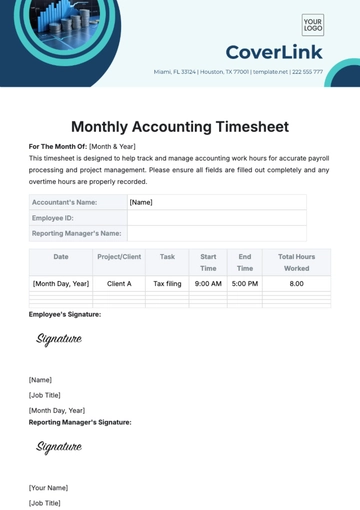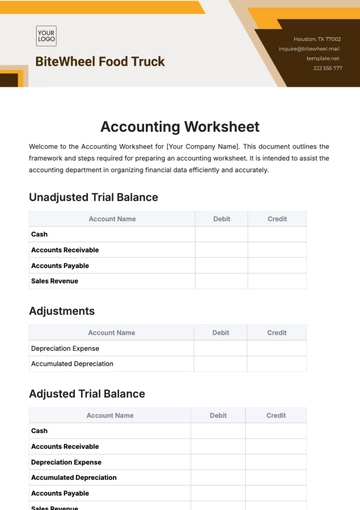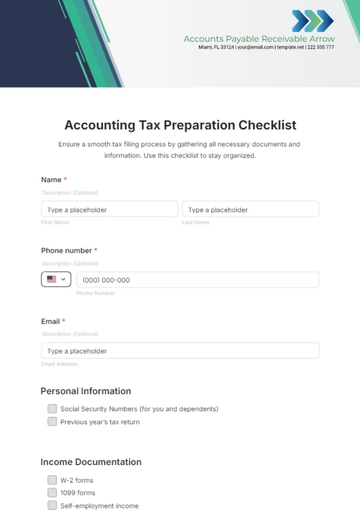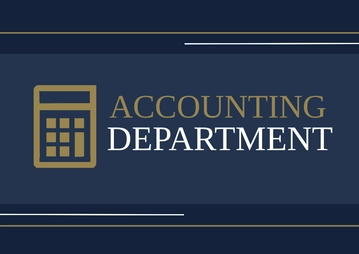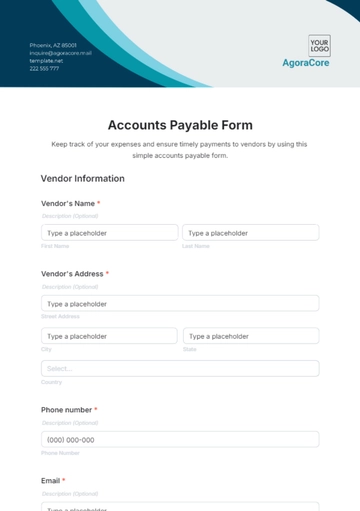Free Payroll Accounting Protocol
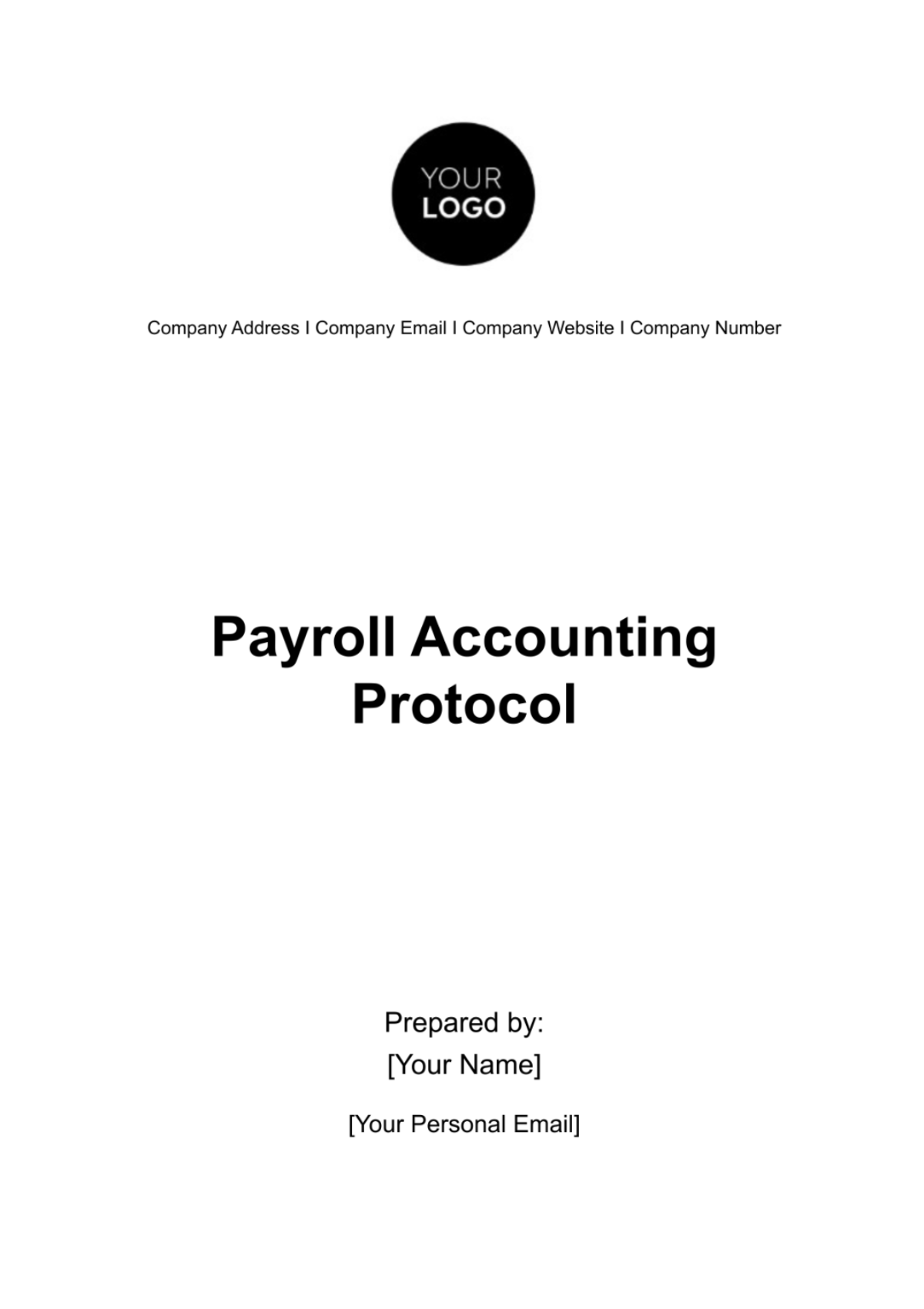
1. Introduction
1.1 Purpose of the Protocol
At [Your Company Name], the Payroll Accounting Protocol serves as a comprehensive guide to manage and execute payroll processes accurately and efficiently. This document is designed to ensure consistency in payroll practices, compliance with legal and regulatory requirements, and effective management of employee compensation.
1.2 Scope and Applicability
This protocol applies to all departments and employees of [Your Company Name]. It covers all aspects of payroll processing, from initial employee setup to final payment disbursement, including record-keeping and reporting. Adherence to this protocol is mandatory for all personnel involved in payroll processing and management.
1.3 Definitions of Key Terms
Gross Pay: | Total compensation before any deductions. |
Net Pay: | The amount an employee receives after deductions. |
Payroll Cycle: | The regular interval at which employees are paid. |
2. Employee Information Management
2.1 Collection of Employee Details
To initiate the payroll process, it's crucial to collect comprehensive employee data. This includes personal information (name, address, social security number), employment details (position, department), and compensation agreements (salary, wage rate, benefits). All collected data must comply with privacy laws and be stored securely.
2.2 Confidentiality and Data Security Measures
[Your Company Name] commits to maintaining the confidentiality and security of employee data. Access to personal information is restricted to authorized personnel only. Regular audits and updates to our data security systems ensure protection against unauthorized access, data breaches, and other security threats.
2.3 Updating Employee Records
Employee records must be kept up-to-date to ensure accurate payroll processing. Any changes in employee status, such as promotions, transfers, or terminations, should be promptly recorded. Employees are responsible for reporting personal information changes (e.g., address, marital status) to HR.
3. Payroll Cycle
3.1 Frequency of Payroll
[Your Company Name] processes payroll on a bi-weekly basis. Each payroll cycle begins on a Monday and ends on the second following Sunday, with paydays occurring on the subsequent Friday. This schedule ensures timely and consistent payment to employees.
3.2 Key Dates and Deadlines
To maintain an efficient payroll cycle, adhering to key dates and deadlines is essential. Payroll processing begins on the Monday following the end of a pay period. All timesheets and payroll adjustments must be submitted to the payroll department by Tuesday noon of the processing week.
3.3 Pre-processing Checklist
Before initiating payroll processing, a pre-processing checklist is completed. This includes verification of timesheet accuracy, approval of overtime, and confirmation of leave balances. This checklist helps in identifying and rectifying discrepancies before payroll processing, ensuring accuracy in payments.
4. Gross Pay Calculation
4.1 Salary and Wages Calculation
At [Your Company Name], gross pay for salaried employees is determined by their annual salary agreement, divided by the number of pay periods in a year. For hourly employees, gross pay is calculated by multiplying the number of hours worked in the pay period by their hourly wage rate. Overtime hours are paid at a rate of 1.5 times the regular hourly rate, in accordance with federal and state labor laws.
4.2 Overtime, Bonuses, and Other Incentives
Overtime pay is calculated weekly. Any hours worked over 40 in a week are subject to overtime pay. Bonuses and incentives are processed as per the terms specified in employee contracts or company policies. These are added to the regular pay in the pay period they are due.
4.3 Deductions
Deductions from gross pay include mandatory federal and state taxes, social security, and Medicare. Voluntary deductions may include retirement plan contributions, health insurance premiums, and other benefit costs. All deductions are itemized on the employee’s pay stub.
5. Benefit Administration
5.1 Health, Dental, and Other Insurance Contributions
[Your Company Name] offers various insurance plans to employees. Contributions for health, dental, and other insurance benefits are deducted from the employee's paycheck. The company may also contribute a portion towards these benefits, as outlined in the employee benefits policy.
5.2 Retirement Plan Management
The company offers a 401(k) plan, with options for employee contributions. Contributions are deducted from the gross pay and are tax-deferred. The company may also make matching contributions to the plan, as per the terms of the 401(k) policy.
5.3 Leave and Vacation Pay Management
Paid leave and vacation are tracked and managed by the HR department. Employees accrue leave based on their tenure and job status. The payroll department ensures accurate calculation and payment for used leave and vacation days.
6. Tax Withholding and Compliance
6.1 Federal and State Tax Calculations
Payroll is responsible for calculating and withholding the correct amount of federal and state taxes from each employee's paycheck. This calculation is based on the employee's tax filing status and withholding allowances, as indicated on their W-4 form.
6.2 Social Security and Medicare Contributions
Social Security and Medicare taxes, also known as FICA taxes, are withheld from each paycheck. The current rates are set by law and are subject to change. Both the employee and the employer contribute equally to these taxes.
6.3 Compliance with Tax Regulations
The payroll department ensures compliance with all applicable tax laws and regulations. This includes timely depositing of withheld taxes and filing of required reports with the IRS and state tax authorities. The department stays updated with tax law changes to ensure compliance.
7. Payroll Disbursement
7.1 Direct Deposit Procedures
Enrollment: Employees provide their banking details using a secure online portal or a paper form. This information is entered into the payroll system by authorized payroll staff.
Verification: Before the first payroll run, a small verification deposit is made to confirm the accuracy of bank details. Employees must confirm receipt of this transaction.
Table: Direct Deposit Enrollment & Verification Process
Step | Action | Responsibility |
|---|---|---|
1 | Submit Bank Details | Employee |
2 | Enter Details into System | Payroll Staff |
3 | Verification Deposit | Payroll System |
4 | Confirmation of Receipt | Employee |
Processing Time: It's important to note that direct deposits are submitted to the bank two business days before payday, ensuring timely disbursement of funds.
7.2 Check Issuance
In cases where direct deposit is not feasible, [Your Company Name] issues physical checks. The payroll department prepares and verifies checks for accuracy. Checks are either mailed to the employee’s address on file or made available for pick-up at a secure location.
7.3 Payroll Card Distribution
For employees without bank accounts, [Your Company Name] offers the option of payroll cards. Payroll loads wages onto the card each pay period. Employees can use the card like a debit card. Information on fees, usage, and benefits is provided to employees upon opting for this method.
8. Record Keeping and Reporting
8.1 Payroll Register Maintenance
The payroll register is a comprehensive record of each payroll transaction. [Your Company Name] maintains this register for all employees, showing gross pay, deductions, and net pay. This record is kept secure and confidential, accessible only to authorized personnel.
8.2 Periodic Reporting Requirements
Regular reports are generated for management and accounting purposes. These include summaries of payroll expenses, tax withholdings, and benefit contributions. Compliance reports for government agencies are prepared and filed as required.
8.3 Year-End Procedures and Documentation
At the end of each fiscal year, [Your Company Name] conducts a thorough review of payroll records. This includes reconciling payroll accounts, preparing W-2 forms for employees, and reporting to the IRS and other agencies as required.
9. Auditing and Quality Assurance
9.1 Regular Internal Audits
To ensure accuracy and compliance, [Your Company Name] conducts regular internal audits of the payroll process. These audits review adherence to protocols, accuracy of payroll calculations, and compliance with tax and labor laws.
9.2 Addressing Discrepancies and Errors
In case of discrepancies or errors, immediate corrective actions are taken. The payroll department has a defined process for investigating and rectifying errors, including communication with affected employees and adjustment in subsequent payrolls if necessary.
9.3 Continuous Improvement Measures
Feedback from audits, employee inquiries, and system analyses are used for continuous improvement of the payroll process. [Your Company Name] remains committed to enhancing payroll efficiency, accuracy, and employee satisfaction.
10. Legal and Regulatory Compliance
10.1 Adherence to Labor Laws
[Your Company Name] is committed to complying with all federal, state, and local labor laws. This includes minimum wage requirements, overtime regulations, and workplace safety standards. HR and payroll teams regularly monitor updates to labor laws and ensure that payroll practices align with the latest legal requirements.
10.2 Keeping Abreast of Regulatory Changes
To stay current with changes in tax laws and regulations, [Your Company Name] designates a team responsible for monitoring updates from tax authorities and government agencies. Any changes are promptly communicated to the payroll department, and adjustments are made to payroll calculations and reporting as required.
10.3 Handling of Legal Disputes or Queries
In the event of legal disputes or employee queries related to payroll, [Your Company Name] has established protocols for resolution. HR and legal teams work together to address and resolve disputes while ensuring compliance with legal procedures.
11. Employee Queries and Communication
11.1 Procedure for Handling Payroll Queries
Employees are encouraged to reach out to the HR department for any payroll-related inquiries or concerns. A dedicated helpline and email address are provided for quick assistance. Queries are tracked, and employees receive timely responses.
11.2 Effective Communication with Employees
Clear and transparent communication is vital. [Your Company Name] maintains an open line of communication with employees regarding payroll processes, changes, and updates. Regular email communications, newsletters, and informational sessions are conducted to keep employees informed.
11.3 Feedback Mechanism for Payroll System Improvement
[Your Company Name] values employee feedback. Anonymous feedback surveys are conducted periodically to gather input on payroll processes. Suggestions for improvement are analyzed and implemented, contributing to a more efficient payroll system.
12. Technology and Software Utilization
12.1 Payroll Software Features and Usage
[Your Company Name] employs state-of-the-art payroll software that automates many payroll processes. This software is regularly updated to incorporate new features and ensure compliance with changing tax laws. Training is provided to payroll staff to maximize software utilization.
12.2 Data Backup and Recovery Plan
Data security is a priority. Regular backups of payroll data are performed and stored securely offsite. A comprehensive disaster recovery plan is in place to ensure minimal disruption in case of data loss or system failures.
12.3 Technology Upgrade and Maintenance Schedule
A schedule for software and hardware upgrades is maintained. These upgrades are usually conducted during low-activity periods to minimize disruptions. Regular maintenance checks are carried out to ensure the system's integrity.
13. Training and Development
13.1 Training Programs for Payroll Staff
Payroll staff undergo comprehensive training programs that cover payroll regulations, software usage, and data security. Continuing education opportunities are provided to keep staff updated with the latest payroll practices.
13.2 Professional Development Opportunities
[Your Company Name] encourages payroll staff to pursue professional certifications such as Certified Payroll Professional (CPP) or Chartered Accountant (CA) to enhance their expertise in payroll management.
13.3 Cross-Training for Resilience and Flexibility
Cross-training is implemented within the payroll department to ensure that multiple team members can perform critical tasks. This enhances flexibility and resilience in case of unexpected staff shortages.
14. Conclusion
14.1 Summary of Protocol Objectives
In conclusion, the Payroll Accounting Protocol of [Your Company Name] is designed to ensure accurate, compliant, and efficient payroll processes. It encompasses a commitment to legal compliance, transparency in communication, and continuous improvement.
14.2 Commitment to Efficient and Accurate Payroll Management
[Your Company Name] recognizes that payroll accuracy is not just a financial matter but also a matter of trust and employee satisfaction. We are steadfast in our commitment to providing employees with precise and timely compensation. Our dedication to accuracy extends to compliance with tax laws, benefits administration, and adherence to best practices. By prioritizing accuracy, we ensure that every employee's hard work is appropriately recognized and rewarded.
14.3 Review and Update Policy
The Payroll Accounting Protocol is a dynamic document that reflects our commitment to continuous improvement. Our review and update policy involves a collaborative effort across departments, with regular audits and assessments. Employee feedback is invaluable in shaping our payroll practices, and we welcome suggestions for enhancements. By maintaining an agile approach to protocol updates, we ensure that our payroll processes remain at the forefront of industry standards and legal compliance, benefiting both our employees and our organization as a whole.
- 100% Customizable, free editor
- Access 1 Million+ Templates, photo’s & graphics
- Download or share as a template
- Click and replace photos, graphics, text, backgrounds
- Resize, crop, AI write & more
- Access advanced editor
Introducing the Payroll Accounting Protocol Template from Template.net. Expertly designed for precision and efficiency, this template offers an unparalleled solution for payroll management. Fully editable and customizable, it adapts seamlessly to your specific needs, ensuring accurate and streamlined payroll processes. Ideal for businesses of all sizes, this Template.net product can be now edited using an Ai Editor Tool.





